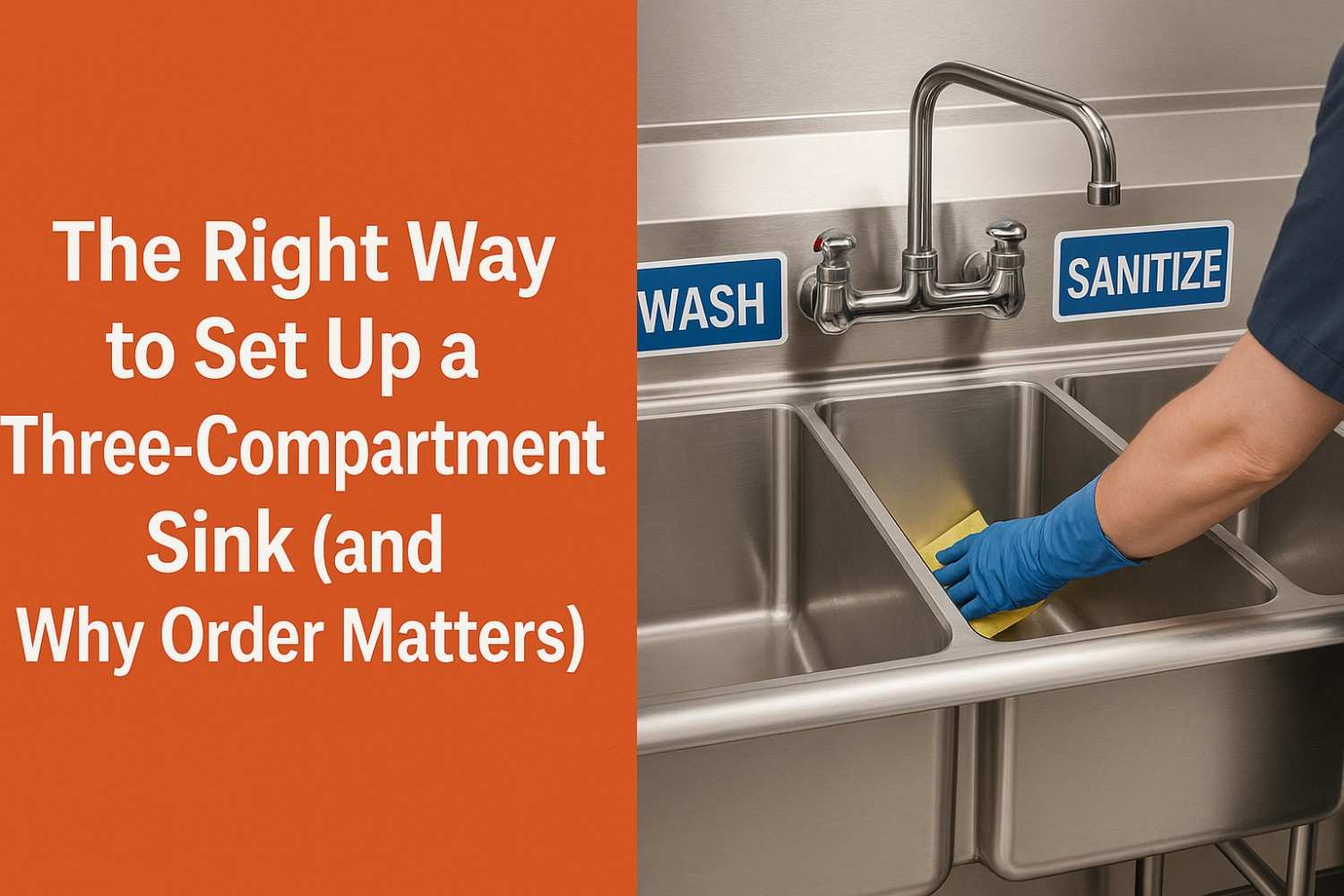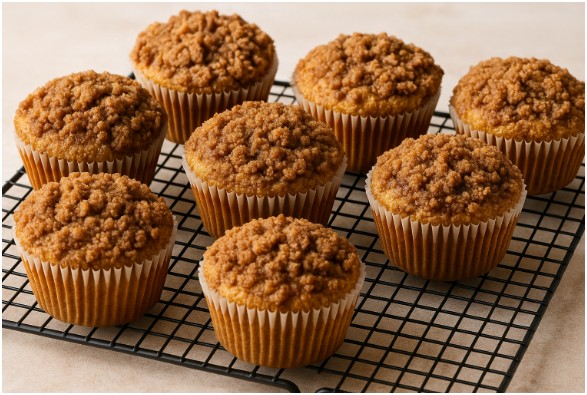A three-compartment sink is designed to wash, rinse, and sanitize by separating steps so soil and soap won’t interfere with sanitizing. But the whole system only works if you start clean. That’s why emptying, washing, and sanitizing each basin and the drainboards first is step zero—before water, detergent, or sanitizer go in.
First Things First: Clean and Sanitize the Sinks and Surfaces
Before any setup, clear the area of debris, food scraps, and tools. Then wash, rinse, and sanitize the sink compartments and drainboards themselves. Many food safety resources emphasize cleaning and sanitizing the sink before and after use, as well as between tasks. This reduces the risk of re-soiling clean wares and keeps the sanitizing step effective.
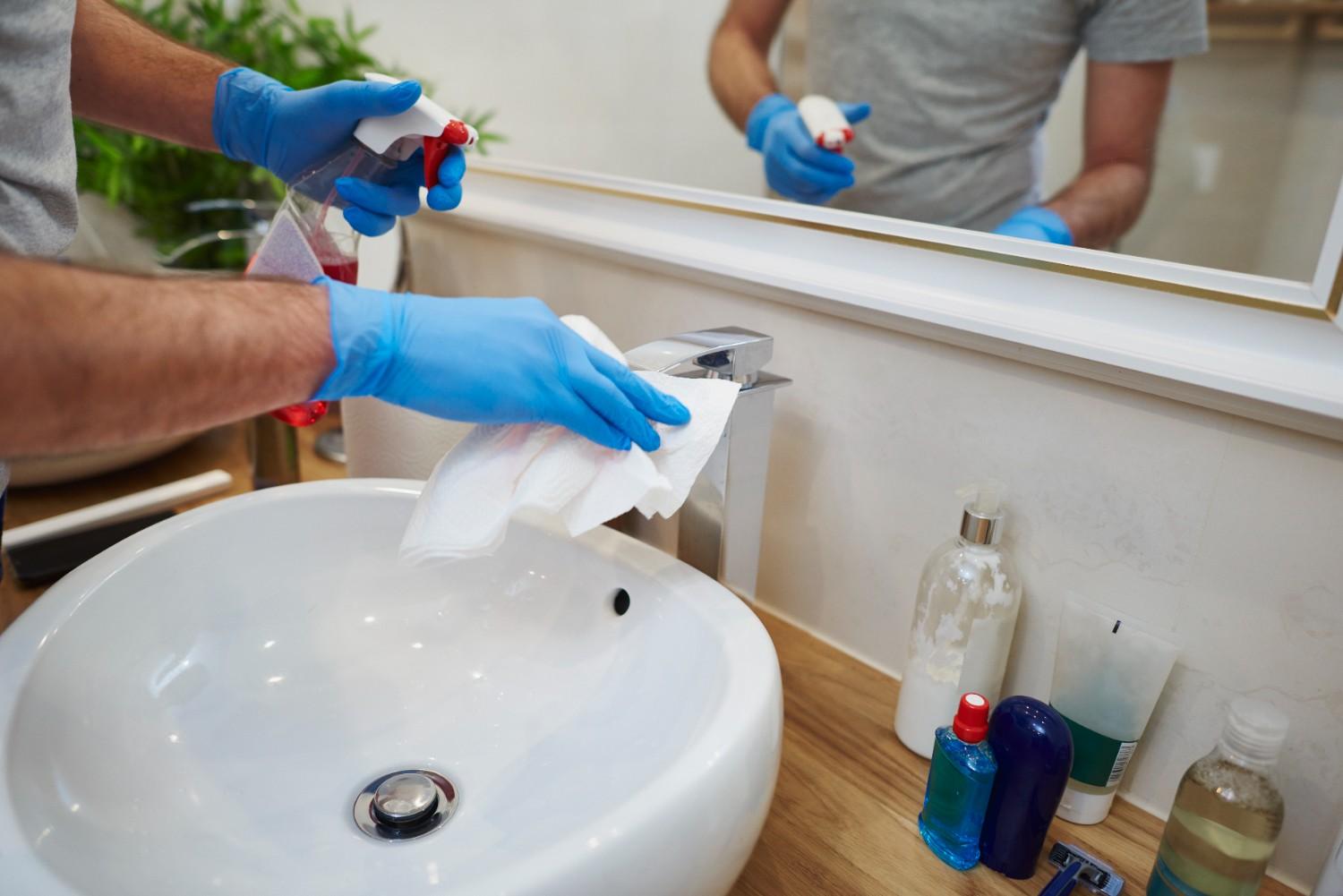
A note on sanitizer checks
Once the sink is clean, make sure you have a sanitizer test kit on hand. ServSafe training materials repeatedly call out checking the concentration of chemical sanitizers in a 3-compartment sink—an easy, often-inspected compliance point.
Fill and Label: Set Up for Wash, Rinse, Sanitize
After you’ve cleaned and sanitized the sink:
- Compartment 1 – Wash: Fill with hot water and detergent. For manual warewashing, reputable training sources specify at least 110°F (43°C) for wash water. Replace when suds are gone or water is dirty.
- Compartment 2 – Rinse: Fill with clean, hot water to remove detergent (soap residue can inactivate sanitizers). Many guides mirror the 110°F minimum for effective rinsing.
- Compartment 3 – Sanitize: Use an approved chemical sanitizer at manufacturer-specified concentration (verify with test strips) or a hot-water sanitizing immersion (commonly 171°F or hotter for at least 30 seconds). Follow the Food Code and local health authority requirements. Always air-dry—no towels.
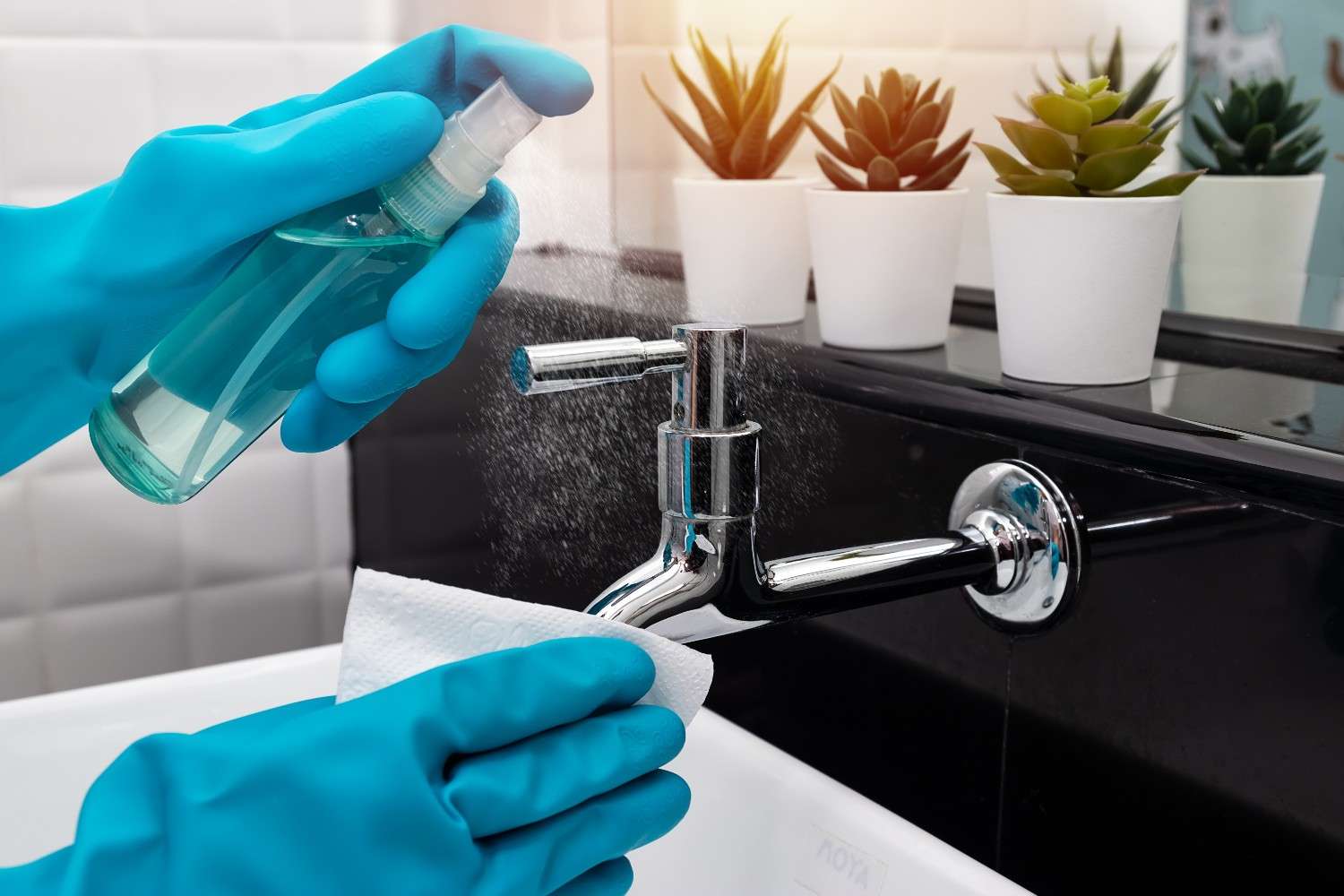
Pro tip: Label each basin “Wash,” “Rinse,” and “Sanitize” to reinforce the correct order and reduce training time for new staff.
The Five Essential Steps of Manual Warewashing (Beyond the Three Sinks)
Even with the compartments set up, the process matters just as much:
- Scrape/Pre-flush: Remove food debris so soil doesn’t foul the wash water or block sanitizer contact.
- Wash in Sink 1: Scrub surfaces thoroughly in hot, soapy water (≥110°F).
- Rinse in Sink 2: Rinse off all detergent; residual soap can neutralize sanitizer.
- Sanitize in Sink 3: Use the correct chemical concentration or hot-water immersion per Food Code and product label; verify with test strips.
- Air-dry: Place items on clean drainboards or racks; avoid towel-drying to prevent re-contamination.
Common Setup Errors That Fail Inspections (and How to Avoid Them)
- Skipping the “clean the sink” step. Inspectors look for it; do it first, every time.
- Wrong temperatures. Keep wash and rinse at ≥110°F; if using hot-water sanitizing, hold ≥171°F for 30 seconds. Use a thermometer.
- No test strips or wrong concentration. You must test chemical sanitizer strength and change out solutions when they’re weak or dirty.
- Towel-drying. It can re-contaminate clean wares; always air-dry.
- Using the 3-compartment sink for non-warewashing tasks. Don’t dump mop water or wash hands here; keep it dedicated to warewashing.
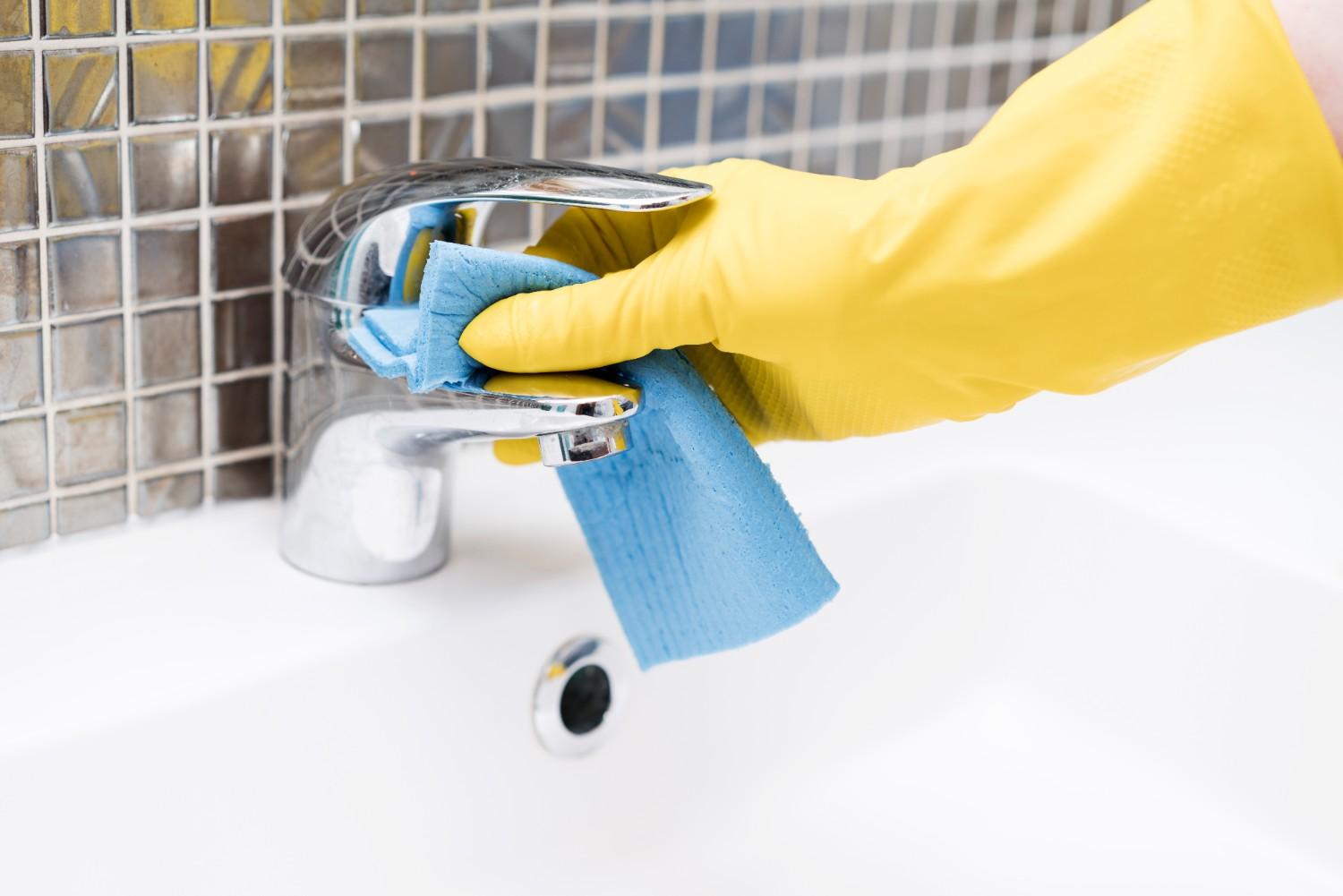
Troubleshooting Cloudy Glasses, Greasy Pans, and “Still Dirty” Plates
If items come out cloudy or greasy, revisit the basics: Did you scrape well? Is the wash water hot and sudsy? Are you rinsing thoroughly to remove detergent before sanitizing? And is the sanitizer concentration correct? Small misses in any of these will show up on your plates and in your health score.
Frequently Asked Questions
1. What temperatures do I need for a three-compartment sink?
Use at least 110°F (43°C) for the wash (and typically the rinse). If you sanitize with hot water instead of chemicals, immerse items at 171°F or hotter for 30 seconds. Always follow your local code and verify temperatures with a thermometer.
2. Which sanitizer should I use, and how do I know it’s strong enough?
Use an approved food-contact sanitizer (e.g., chlorine, quats, or iodine) at the label-specified concentration. You’re required to check strength with the correct test strips and to remake the solution if it’s out of range or visibly dirty.
3. Do I really have to clean and sanitize the sink itself first?
Yes. Guidance for preparing a 3-compartment sink clearly calls for emptying, washing, and sanitizing each basin and the drainboards before use—and again after use or between tasks. Starting with a contaminated sink undermines the sanitizing step.
4. Can I towel-dry to speed things up?
No. Air-drying is required because towels can re-introduce microbes. Use clean racks or drainboards and give items time to dry fully before stacking or storing.
Conclusion: Start Clean, Stay Compliant
To recap, what is the first thing a food handler should do when preparing a three compartment sink? Clean and sanitize the sink and drainboards—then set up wash (≥110°F), rinse, and sanitize correctly, verify sanitizer strength, and air-dry every item. Nail these fundamentals and you’ll protect guests, speed up dishroom flow, and keep your next health inspection stress-free.

